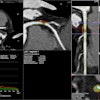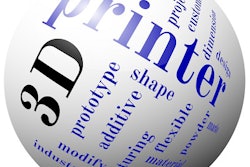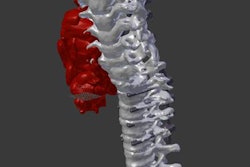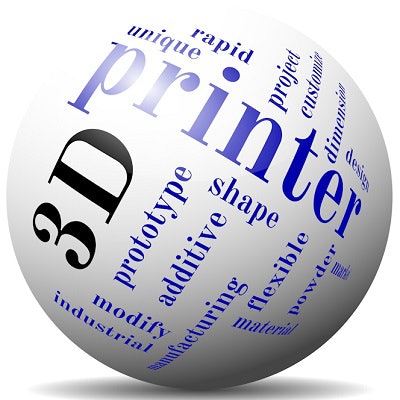
So, you've started a hospital-based 3D printing service or are perhaps planning to. Undoubtedly, there is a lot of excitement and anticipation about beautiful, multicolor, patient-specific 3D models coming off the printer. But what do you need to know before getting started?
Many hospital 3D printing services are started with the best intentions. This includes the desire to positively impact patient care, harness innovative technologies, provide physicians with a new way to understand patient anatomy and pathology, and reduce costs.
Yet, it's realistic to anticipate that your 3D printing lab will produce little, if any, incremental revenue and therefore operate at a loss when you consider start-up costs and limited reimbursement in the current climate. This article is intended to shed light on ways to demonstrate the positive effect your 3D printing service is having on patient care and your bottom line.
Limited reimbursement
Start-up costs for a new hospital 3D printing service or lab can range from $10,000 to $20,000 on the low end, with volunteer or borrowed staff, existing office space, freeware, and a small desktop printer. The cost could alternatively be up to several hundreds of thousands of dollars for one or more full-time employees, training, office space, U.S. Food and Drug Administration (FDA)-cleared medical 3D printing software, a high-end printer capable of printing in a wide range of materials and colors, and more.
Start-up costs are often covered by research funding, philanthropy, innovation grants, or other grant funding. While there is limited or no reimbursement by payors for complex case planning, including 3D-printed cut and drill guides, existing reimbursement opportunities generally occur only on a case-by-case basis.
You may consider discussing specific surgical planning and postprocessing billing codes with your billing department to get its opinion on where it may be appropriate to use these codes. Dedicated billing codes for 3D-printed anatomical models do not yet exist, and reimbursement for 3D-printed anatomical models may still be years away with no guarantee it will happen. For most hospitals, this means starting a 3D printing service creates cost with limited, if any, incremental revenue.
Return on investment?
Let's look into the future of your newly established 3D printing service, perhaps 12 to 18 months from now. Once any donor or grant funding has run out and you are seeking additional funding to sustain your 3D printing program, your chief financial officer (CFO) may ask what the return on investment is from your 3D printing service. How will the request for additional funding that covers operational costs be justified?
"I find 3D printing technology interesting but am not convinced of its value," is a likely response by a hospital administrator.
If your CEO or CFO made this comment about your 3D printing service, would you be prepared to respond?
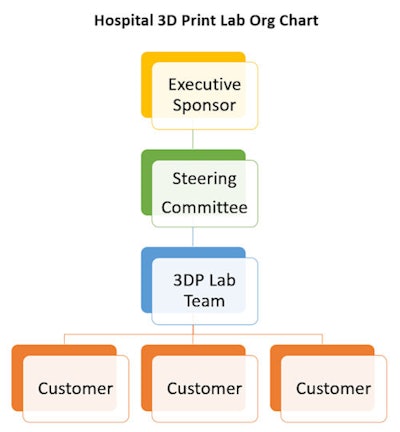 Image courtesy of Edward Stefanowicz and Bill O'Connell.
Image courtesy of Edward Stefanowicz and Bill O'Connell.As Peter Drucker famously said, "What gets measured, improves." Questions that may help inspire meaningful debate among your team about what to measure include the following:
- What, exactly, do we hope to improve?
- What, specifically, will we measure?
- What is our starting baseline measurement?
- How will we define progress?
- How will we track improvement?
- How will we collect data?
- Who, specifically, will collect the data?
- What will the data be used for?
Elevator speech
To clearly and concisely communicate the value of your 3D printing service in a way that will make it easier for others to remember, you may consider crafting a short yet cogent elevator pitch.
Suppose you ran into a member of your leadership team or hospital board in the elevator, and he or she asked what your 3D printing program was all about. With only 30 seconds until the elevator stops at the person's floor, what would you say?
Considering funds for some programs will be approved and funds for other programs denied (or discontinued), what are the most important things you would want a senior executive or board member to know? What is your 3D printing program really about? Why are you doing 3D printing? What are you really hoping to achieve? How is your answer relevant to your organization's vision, mission, values, and key strategic initiatives?
An idea you may consider is preparing a one- or two-sentence value capture statement, which cogently describes the single most important reason why you are implementing a 3D printing program, as well as the measureable impact your team seeks to achieve. A hypothetical example: "Our 3D printing program uses the latest innovative technology to provide physicians with enhanced understanding for the most complex cases. We are also currently studying how 3D printing may help measurably improve the patient experience."
Suggestions
A limited-scope project is a manageable project. It comes down to focus; it is a matter of identifying your most interested customers and starting to work with them.
Start-up 3D printing labs often have very limited resources. It is better to implement a simple plan that measures one or two data points, and do so successfully, than attempt to measure multiple data points and fail. A simple project plan and weekly team conference calls may be helpful in keeping the value capture effort on track and the lines of communication open.
Having a member of the leadership team as an executive sponsor increases credibility, the authority to make decisions quickly, and potentially access to additional resources to help the project succeed. Make sure to report results to the committee monthly.
In addition, look for volunteers who share your passion for 3D printing. Are there medical students, interns, or residents you may enlist to help with the value capture initiative?
Most importantly, seek regular feedback from clinicians. Excellent communication and collaboration will enable you to print models that will be useful to them and will create opportunities to capture value. The clinicians who use the models know best what will be most effective in practice. Encourage them to think outside the box and include them in the printing process. If they can understand the technology's capabilities and limitations, your whole team will benefit.
Edward Stefanowicz is an MRI and radiologic technologist and operations director for the Neuroscience Institute at Geisinger Medical Center. He is also team leader of the 3D imaging lab at Geisinger Health System, which provides 3D printing services such as postprocessing of CT and MRI scans as well as creating patient-specific 3D-printed anatomical models.
Bill O'Connell is the North American regional sales director for 3D printing firm Materialise. He works with leading physicians and hospital administrators to help them develop and deploy their 3D printing strategy.
The comments and observations expressed are those of the authors and do not necessarily reflect the opinions of AuntMinnie.com.



